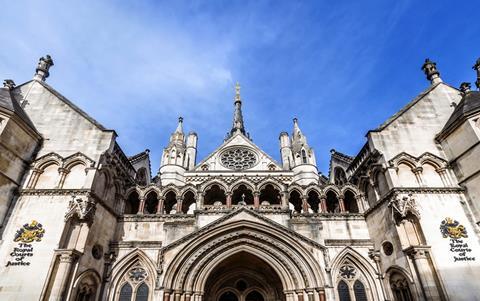There are an estimated 50,000 amendments that need to be reviewed following the Virgin Media ruling. Matthew Swynnerton of the Society of Pension Professionals (SPP) explores how trustees can approach this unenviable task.
In July 2024, the Court of Appeal upheld the High Court ruling that a failure to obtain a section 37 written, actuarial confirmation in relation to an amendment to a salary-related contracted-out scheme invalidated that amendment in relation to both past and future service rights.
As a result, where defined benefit schemes have made amendments between April 1997 and April 2016 affecting salary-related contracted-out rights, and there is no evidence of a confirmation having been provided, those amendments will be void for past and future service.
The ruling was a landmark decision of industry-wide significance, the implications of which remain far from clear.
Calls for government action after Virgin case ruling
Industry groups last year called for the government to draft a regulation to allow retrospective validation of amendments affected by the Virgin-NTL ruling, which would mean any amendment deemed void solely due to the absence of an actuarial confirmation would remain valid. Read more
It had been hoped that the Court of Appeal judgment would provide some guidance in relation to the level of evidence needed to conclude that a confirmation was given, or what to do where a confirmation could not be located but, sadly, this was not the case.
We know now that there will be no further appeal to the Supreme Court, although a case covering some Virgin-related issues has recently been heard.
In the background, there remains the possibility of intervention from the Department for Work and Pensions (DWP). Cross-industry lobbying of the DWP by the SPP, the Association of Pension Lawyers and the Association of Consulting Actuaries, continues.
So where does this leave scheme trustees and sponsors?
Where are your confirmations?
There are an estimated 50,000 deeds containing relevant amendments that would need to be reviewed across the industry in light of the Virgin ruling.
It may be that, in some cases, confirmations were not obtained because it was obvious that the contracting-out minimum requirements would continue to be met – for example, where the amendment increased future service benefits. In other cases, confirmations may have been obtained and subsequently misplaced.
How do trustees establish whether there is evidence of a confirmation?
The obligation is for the trustees to obtain the confirmation, rather than to keep it. Obtaining the confirmation, and subsequently losing it, would not necessarily invalidate an amendment.
Whether a confirmation has been given is a question of fact, which a court would determine on the balance of probabilities. Note that the obligation is for the trustees to obtain the confirmation, rather than to keep it. Obtaining the confirmation, and subsequently losing it, would not necessarily invalidate an amendment.
Trustees may be able to rely on a presumption of regularity if there is evidence of common practice in relation to the provision of confirmations. The scheme actuary may be able to provide some comfort here.
A recital in the deed confirming that the scheme actuary has considered the amendment in the context of section 37 is considered by most in the industry to be sufficient evidence that this would have happened in practice.
Assessing the need for review
Taking a step back, do trustees need to carry out a thorough review of their past deeds in light of the judgment?
Our view is that there is no immediate obligation to do this under trust law. However, the pressure on trustees to review their documents remains. This pressure often comes from the auditors to the scheme sponsor, or because the scheme is involved in a buyout scenario or corporate activity where trustees and sponsors need to understand the precise benefits they need to insure or the level of any risks.

Trustees who do conduct a full review should be aware that it may reveal issues in relation to confirmations (and perhaps other, unrelated problems) and that, if issues are revealed, trustees would then have trust law duties to rectify them.
What are the alternatives? One option is for trustees to undertake a lighter-touch review of the scheme’s governing documents only, looking for section 37 recitals and certificates (but not digging deeper in relation to correspondence).
The advantage of this is that it would not reveal definite risks, but it might enable trustees to become more comfortable that any risks are minimal. Where obvious problems are found, trustees could decide whether to do further digging at this stage.
A second option, if the pressure to review is coming from auditors, is for trustees to push back and wait a little longer before taking any action. Apart from the possibility of a DWP intervention, a significant High Court judgment is expected this autumn, which may provide further clarity on the practical implications of the Virgin case.
The Pensions Trust litigation covered questions that are particularly pertinent in light of the Virgin decision. For example, what constituent elements of pension are subject to the requirement for a confirmation? Where a confirmation cannot be located, can the court have regard to the presumption of regularity to conclude that, in fact, a confirmation did previously exist?
The industry awaits the judgment, although this is not expected until the autumn. Watch this space.
Matthew Swynnerton is a member of the Society of Pension Professionals.






















